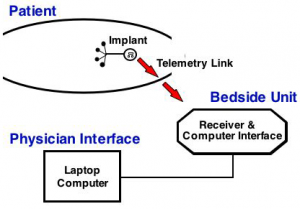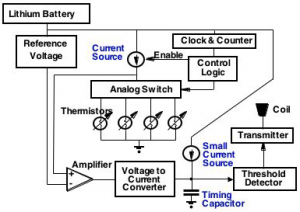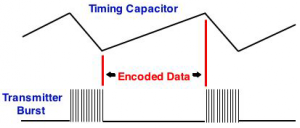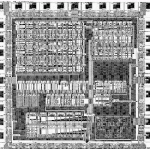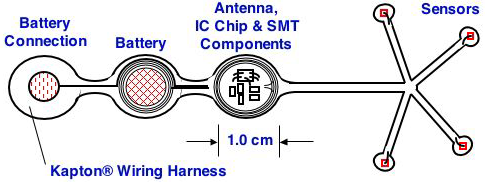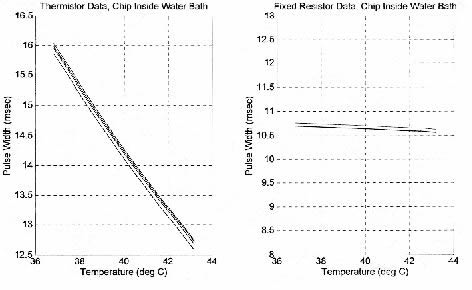System Concept
The operation of the M-STAR is conceptually simple. An array of sensors is attached to an implantable batter-powered chip. The chip receives information form the sensors and transmits it to a nearby computer workstation for analysis (Figure 1). The M-STAR device can obtain real-time information on several biological or physiological parameters that limit the response of tumors to therapy. This information can be obtained before or during therapy, so that treatments can be tailored to the characteristics of a patient’s tumor.
Completed Research
A Four Channel prototype was constructed to record temperature information and transmit it in pulse-width bursts to a nearby receiver that
is connected to a computer workstation (Figure 2)
A first-generation integrated circuit (IC) test chip was designed to handle up to eight sensors (Figure 3).
For implantation, the IC chip will be mounted on a flexible Kapton substrate that also contains the sensors (Figure 3). Note that the Battery Connection and Battery fold over twice, and are positioned over the Antenna, IC Chip & SMT Components before the implant is encapsulated.
Temperature Experiments:
The first-generation device was tested by exposing the chip and sensors to a series of radiation and thermal tests. In the temperature experiments, four channels were connected to thermistors, and three channels were connected to fixed resistors. as can be seen in (Figure 5), the pulse width varied linearly with temperature at a rate of 0.03 ms/0.1 degrees Celsius. These results are well within the accuracy specifications.
Radiation Experiments:
In the radiation Experiments (Figure 6), the device was down-powered and exposed to a series of 4 Gy doses that resulted in total doses of up to 80 Gy. these radiation doses are higher than those normally used in the clinic. the pulse width of both the thermistor and fixed resistor channels changed by about 0.0015 ms/Gy, or about the equivalent of 0.005 degrees Celsius per Gy. For a total dose of 80 Gy, this translates into a change of less than 0.4 degrees Celsius, a change that can be corrected by signal processing. thus, the M-STAR device can accurately measure tumor temperatures (and presumably other parameters) when the chip and sensors are exposed to radiation doses that are expected during radiotherapy.

